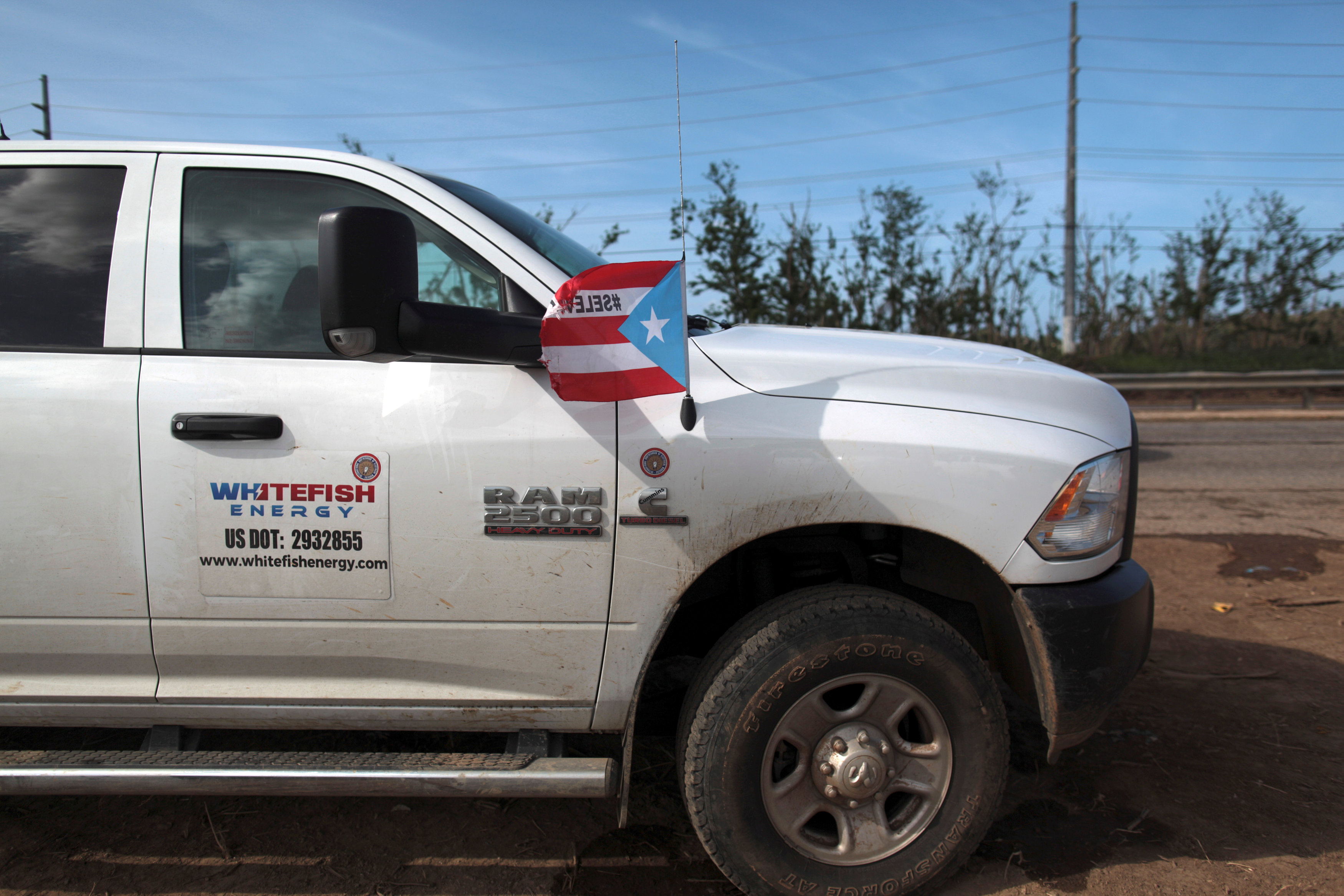
By Kaori Kaneko and Chang-Ran Kim
TOKYO (Reuters) – A powerful earthquake paralyzed Japan’s northern island of Hokkaido on Thursday, killing at least seven people, triggering landslides and knocking out power to its 5.3 million residents.
The death toll from the 6.7-magnitude, pre-dawn quake was likely to rise as rescuers searched houses buried by landslides.
About 33 people were missing and 300 were injured, public broadcaster NHK said. Four people were in cardiopulmonary arrest, a term used before death is officially confirmed.
The quake was the latest in a string of natural disasters to batter Japan after typhoons, flooding, and a record-breaking heat wave within the past two months.
Aerial footage showed dozens of landslides exposing barren hillsides near the town of Atsuma in southern Hokkaido, with mounds of red earth and toppled trees piled at the edge of green fields.
The collapsed remains of what appeared to be houses or barns were strewn about.

A building damaged by a powerful earthquake is seen in Abira town in Japan’s northern island of Hokkaido, Japan, in this photo taken by Kyodo September 6, 2018. Mandatory credit Kyodo/via REUTERS
“It came in four big jerks – boom! boom! boom! boom!” one unidentified woman told NHK. “Before we knew it our house was bent and we couldn’t open the door.”
Prime Minister Shinzo Abe said 25,000 Self-Defense Force troops would be deployed for rescue operations.
The island, a tourist destination about the size of Austria known for its mountains, lakes, and seafood, lost its power when Hokkaido Electric Power Co shut down of all its fossil fuel-fired power plants after the quake as a precaution.
It was the first time since the utility was established in 1951 that had happened.
Almost 12 hours later, power was restored to parts of Sapporo, Hokkaido’s capital, and Asahikawa, its second-biggest city.
The government said there was damage to Hokkaido Electric’s Tomato-Atsuma plant, which supplies half the island’s 2.95 million households. It could take a week to restore power fully to all residents, Industry Minister Hiroshige Seko said.
All trains across the island were halted.
Abe’s Liberal Democratic Party begins a leadership contest on Friday but said there would be no campaigning through to Sunday. Abe and rival Shigeru Ishiba both canceled campaign media appearances slated for Friday.

Landslides caused by an earthquake are seen in Atsuma town in Japan’s northern island of Hokkaido, Japan, in this photo taken by Kyodo September 6, 2018. Kyodo/via REUTERS
‘NOTHING I CAN DO’
Television footage from Sapporo showed crumbled roads and mud covering a main street. Police directed traffic because signal lights were out while drink-vending machines, ubiquitous in Japan, and most ATMs were not working.
“Without electricity, there’s nothing I can do except to write prescriptions,” a doctor in Abira, the town next to Atsuma, told NHK.
Media reported a baby girl at a Sapporo hospital was in critical condition after the power was cut to her respirator. It wasn’t clear if the hospital had a generator.
The quake hit at 3:08 a.m. (1808 GMT Wednesday) at a depth of 40 km (25 miles), with its epicenter about 65 km (40 miles) southeast of Sapporo, according to the Japan Meteorological Agency. In Atsuma, it registered a 7 on Japan’s 7-point quake intensity scale, the agency said, revising an earlier measurement.
Hokkaido’s main airport was closed, at least for the day. Debris and water could be seen on the terminal floors.
Kyodo news agency said more than 200 flights and 40,000 passengers would be affected on Thursday alone.
The closure comes just days after Kansai Airport, another major regional hub, in western Japan, was shut by Typhoon Jebi, which killed 11 people and injured hundreds.
The storm, the most powerful to hit Japan in 25 years, stranded thousands of passengers and workers at the airport, whose operator said it would resume some domestic flights on Friday.
In July, torrential rain in west Japan caused flooding that killed more than 200 people and widespread destruction. That was followed by a heat wave that reached a record 41.1 Celsius and led to the deaths of at least 80 people.
FACTORIES HALTED
Farming, tourism and other services are big economic drivers on Hokkaido, which accounts for just 3.6 percent of Japan’s gross domestic product, but there is some industry. Kirin Brewery and Sapporo Breweries both said factories were shut by the power outage.
A series of smaller shocks followed the initial quake, the JMA said. Residents were warned to take precautions.
By the afternoon, backhoes and other earth-moving equipment in Atsuma had begun clearing debris.
Japan is situated on the “Ring of Fire” arc of volcanoes and oceanic trenches that partly encircles the Pacific Basin.
Northeast Japan was hit by a 9 magnitude earthquake on March 11, 2011, that triggered a tsunami that killed nearly 20,000 people and led to meltdowns at the Fukushima Daiichi nuclear power plant.
Hokkaido’s Tomari nuclear power station, which has been shut since the 2011 earthquake and tsunami, suffered a power outage but officials said it was cooling its spent nuclear fuel safely.
Saturday marked the 95th anniversary of the Great Kanto earthquake, which had a magnitude of 7.9 and killed more than 140,000 people in the Tokyo area. Seismologists have said another such quake could strike the capital at any time.
(Reporting by Kaori Kaneko and Chang-Ran Kim; Additional reporting by William Mallard, Osamu Tsukimori, Aaron Sheldrick, Elaine Lies and Takaya Yamaguchi; Writing by Malcolm Foster; Editing by Paul Tait, Robert Birsel)















